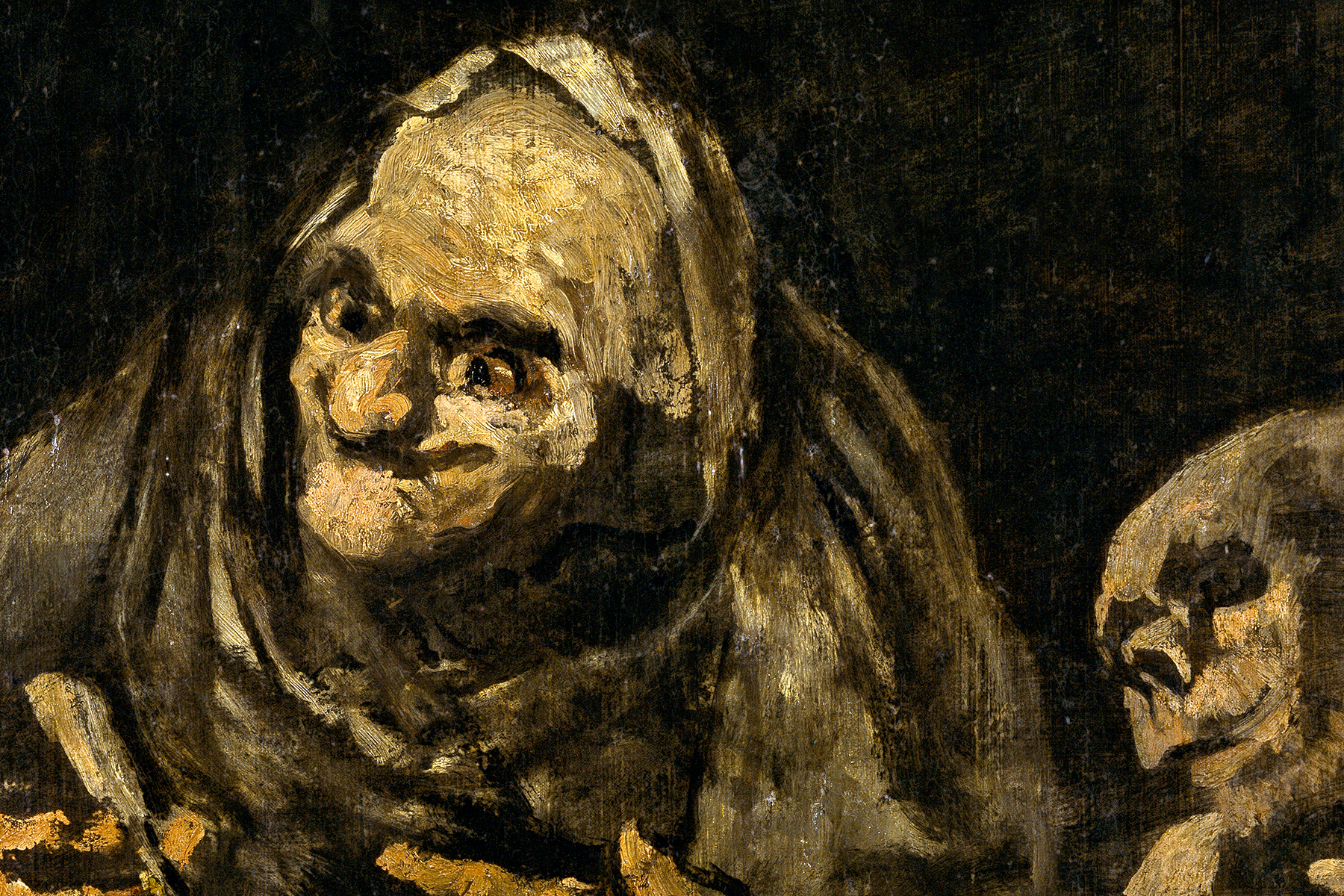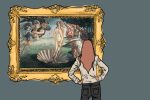19th-century Spanish painter Francisco Goya’s art can be characterized stylistically by his loose, impressionist brush strokes and thematically by his outspoken criticism of Spanish high society. After his death in 1828, the artist earned a posthumous name for himself as one of contemporary art’s earliest trailblazers and is now considered one of the first “modern” artists.
Goya began his professional career as a court painter, where he painted portraits of the Spanish royal court, emphasizing the idyllic lifestyle of the wealthy few. These early paintings are recognized by their lavish details and bright, cheerful colors.
As Goya aged, however, so would his worldview and artwork. Following an increasingly turbulent political atmosphere, Goya’s work became more and more outwardly cynical. His 80-piece series, “Los Caprichos,” or “The Follies,” was created as a satire of Spain’s bureaucracy. The pieces featured haggard characters and unsavory topics like prostitution and drunken chaos in an outward criticism of Enlightenment philosophies.
During the late 1700s, the European Enlightenment period was in full swing. This philosophical movement was defined by its prominent focus on reason and rationality, as well as its emphasis on scientific advancement, progress and its ample criticism of tradition.
The art of the Enlightenment strove to pronounce the importance of virtue and to condemn sin, immorality and that which was otherwise indecent. In juxtaposition with his Enlightenment-era predecessors, the satirical disillusionment with modern society Goya displayed within his work expressed a clear rejection of the romantic, artistic ideals often fantasized about in the world of post-Renaissance European art.
None of Goya’s work better reflects his deviation from traditional ideas of virtue than his final collection of works, often dubbed the “Black Paintings.” Following his retirement, Goya retreated to his villa in the outskirts of Madrid — a house interestingly dubbed “el quinta del sordo,” or “the deaf man’s house.” Goya himself had become deaf after becoming ill in his 40s, and subsequently lived the better part of 30 years without his hearing. The villa’s name, however, was a remnant of the previous owner, who had also been deaf. Goya’s deafness has been thought to have played a role in the sordid nature of his later work and his Black Paintings in particular.
Consisting of a series of 14 illustrations painted directly onto the walls of his riverside villa, these paintings are considered by some to be the most disturbing works of art ever created. In stark contrast with his earliest works, the paintings are largely gestural and look almost rushed or unfinished. From their freakish distortions of human faces to their dark and foreboding colors, these paintings instill a sense of raw mental anguish.
The most famous of these paintings — and perhaps the most gruesome — is called “Saturn Devouring His Son.” The piece depicts the mythological Greek tale of Kronos, or Saturn, who cannibalized his own children to prevent them from usurping his throne. The painting displays a deformed, inhuman Saturn, eyes bulging and expression manic as he devours a small human figure. Bright streaks of red blood provide the only vibrant color in the piece. The painting’s metaphorical meaning, if there is one at all, has been speculated to be a commentary on the Spanish monarchy during its final years, and a retrospective on the harrowing realities of war.
“Witches’ Sabbath” is a comparatively more atmospheric piece, with a number of figures interacting with each other in a crowded space. Dull browns and grays delineate the outlines of distressed-looking women who surround an upright-sitting goat — an example of popular satanic iconography. Goya often expressed an interest in witchcraft and the occult in his work, something that was both contradictory to the far more popular use of Christian symbolism by his peers and highly controversial. This painting may be a reference to or perhaps an example of a popular critique of Enlightenment philosophy, which indicts the movement as a form of devil worship or witchcraft.
Perhaps the saddest of all these pieces, however, is the simple and yet poignant painting “The Dog.” A dark body of water is interrupted by the simple head of a black dog, bobbing just above the surface. The dog watches on despairingly as the growing wave threatens to engulf him, knowing that he can do little to deter the water’s inevitable impact. The painting, though minimalist, conveys a hopeless misery that feels like a glimpse into Goya’s psyche.
These paintings, despite their metaphorically striking subjects, were not in fact intended as an artistic statement. Having painted them on his own interior walls, Goya likely never intended for them to meet the public eye, instead allowing them to be seen only by close friends and family. As such, no true statement was ever given on his motivation behind these paintings, nor what they might represent.
It’s easy to speculate, however, that these works were the result of a troubled mind. Because of their upsetting and often graphic nature, many have suspected that these “Black Paintings” were in fact the result of mental illness, a reaction to the horrors of war or simply evidence of the waning coherence of an aging mind.
Because no record was left of these paintings’ meanings, there’s no way to know for sure. Goya was well known for being a contrarian, and so his delve into uncanny subject matter was not entirely uncharacteristic. Maybe he was truly trying to make a political statement that would only be revealed after his death, or maybe he just found creating these paintings to be cathartic.
Regardless, the paradigm shift heralded by Goya and similar post-Enlightenment artists would prove quintessential to the later artistic movements of the 19th and 20th centuries. Despite preceding the movement by almost 100 years, Goya’s figurative pieces show striking similarities to the works of Impressionist era artists such as Monet. The influence of Goya’s “Black Paintings” has been observed and acknowledged in the works of later artists — including Pablo Picasso and Pierre Renoir — and their disturbing nature lends itself well to their cementation as an important part of art history.











